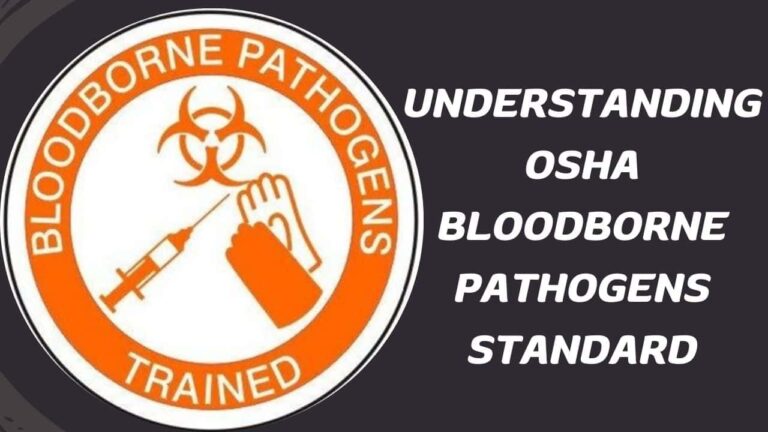Ensuring Workplace Safety: Requirements for Employers with Occupational Exposure to Bloodborne Pathogens
Introduction
Employers have a legal and moral obligation to safeguard the health and safety of their workers, especially those at risk of occupational exposure to bloodborne pathogens and other potentially infectious materials (OPIM). In workplaces where employees handle human blood or OPIM, comprehensive measures must be in place to minimize the risk of exposure and protect employees from potential harm. This article outlines the essential requirements that employers need to fulfill to ensure workplace safety in environments with occupational exposure to bloodborne pathogens and OPIM.
Key Requirements for Employers
1. Exposure Control Plan
An exposure control plan serves as the cornerstone of workplace safety in environments with occupational exposure to bloodborne pathogens and OPIM. This plan outlines the specific procedures and practices aimed at minimizing the risk of exposure, including tasks and job positions with potential exposure, methods of compliance, and procedures for incident management.
2. Engineering Controls
Employers must implement engineering controls to eliminate or minimize exposure to bloodborne pathogens and OPIM. This includes utilizing safer medical devices with engineered sharps injury protections and implementing systems for the safe disposal of contaminated materials.
3. Work Practice Controls
Work practice controls involve implementing procedures that reduce the likelihood of exposure through changes in how tasks are performed. Examples include proper hand hygiene practices, safe handling and disposal of contaminated materials, and protocols for cleaning and decontamination.
4. Personal Protective Equipment (PPE)
Employers are responsible for providing appropriate PPE to workers at risk of exposure. This may include gloves, gowns, face shields, and eye protection. Ensuring that PPE is readily available, properly fitted, and used correctly is essential for worker safety.
5. Training
All employees with occupational exposure to bloodborne pathogens and OPIM must receive comprehensive training on the risks associated with exposure, preventive measures, proper use of PPE, emergency response procedures, and incident reporting protocols. Training should be provided initially upon hire and regularly thereafter to ensure ongoing compliance.
6. Hepatitis B Vaccination
Employers are required to offer the hepatitis B vaccine series to employees with occupational exposure to blood or OPIM at no cost. Vaccination should be offered within a specified timeframe after initial assignment to tasks involving exposure.
7. Post-Exposure Evaluation and Follow-Up
Employers must provide prompt medical evaluation and follow-up for employees who experience exposure incidents, such as needlestick injuries. This includes documenting the incident, assessing the risk of infection, and providing appropriate medical care and counseling to affected employees.
Conclusion
By implementing these essential requirements, employers can effectively protect their workers from occupational exposure to bloodborne pathogens and OPIM and ensure compliance with relevant regulations, such as the Occupational Safety and Health Administration (OSHA) Bloodborne Pathogens Standard. Prioritizing workplace safety not only safeguards the health and well-being of employees but also fosters a culture of responsibility and accountability within the organization.



